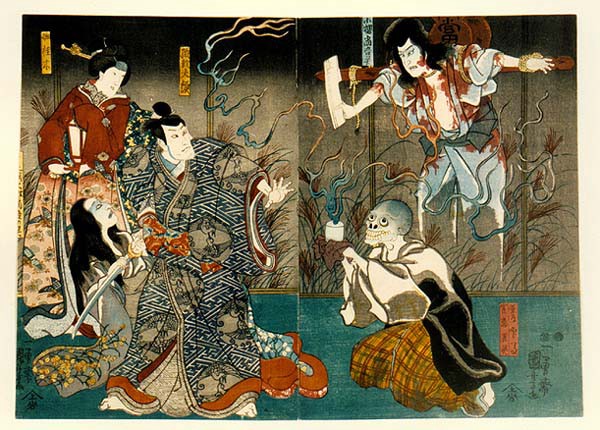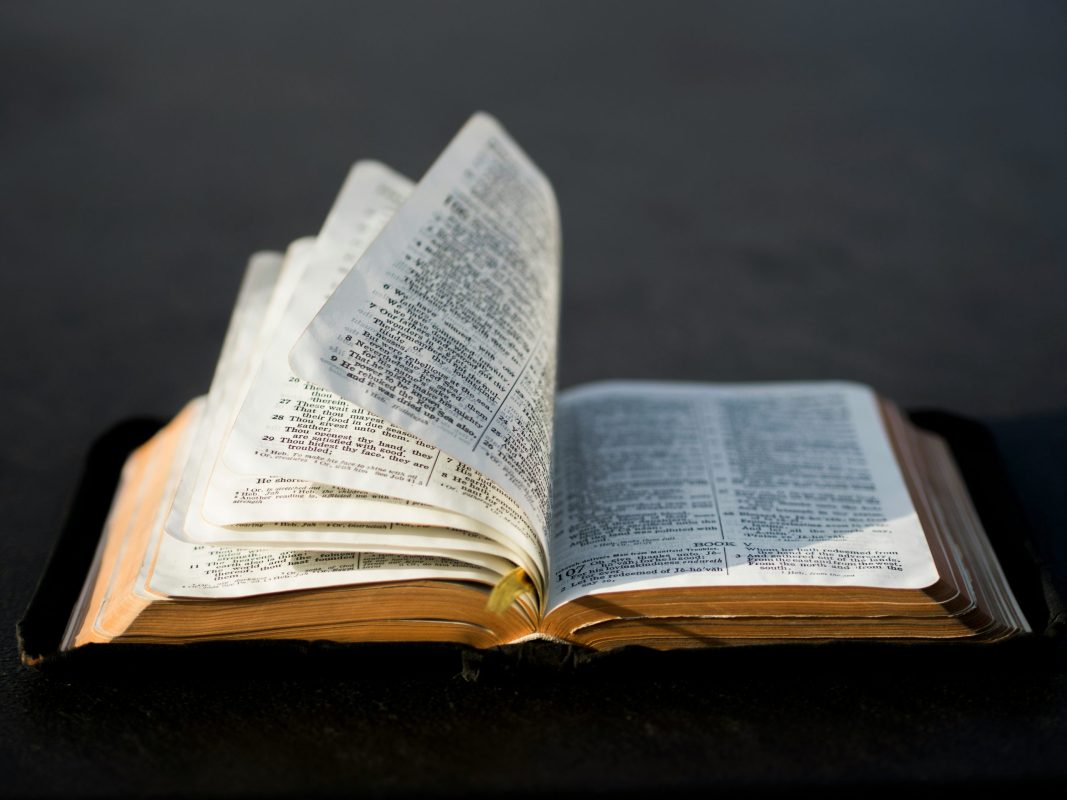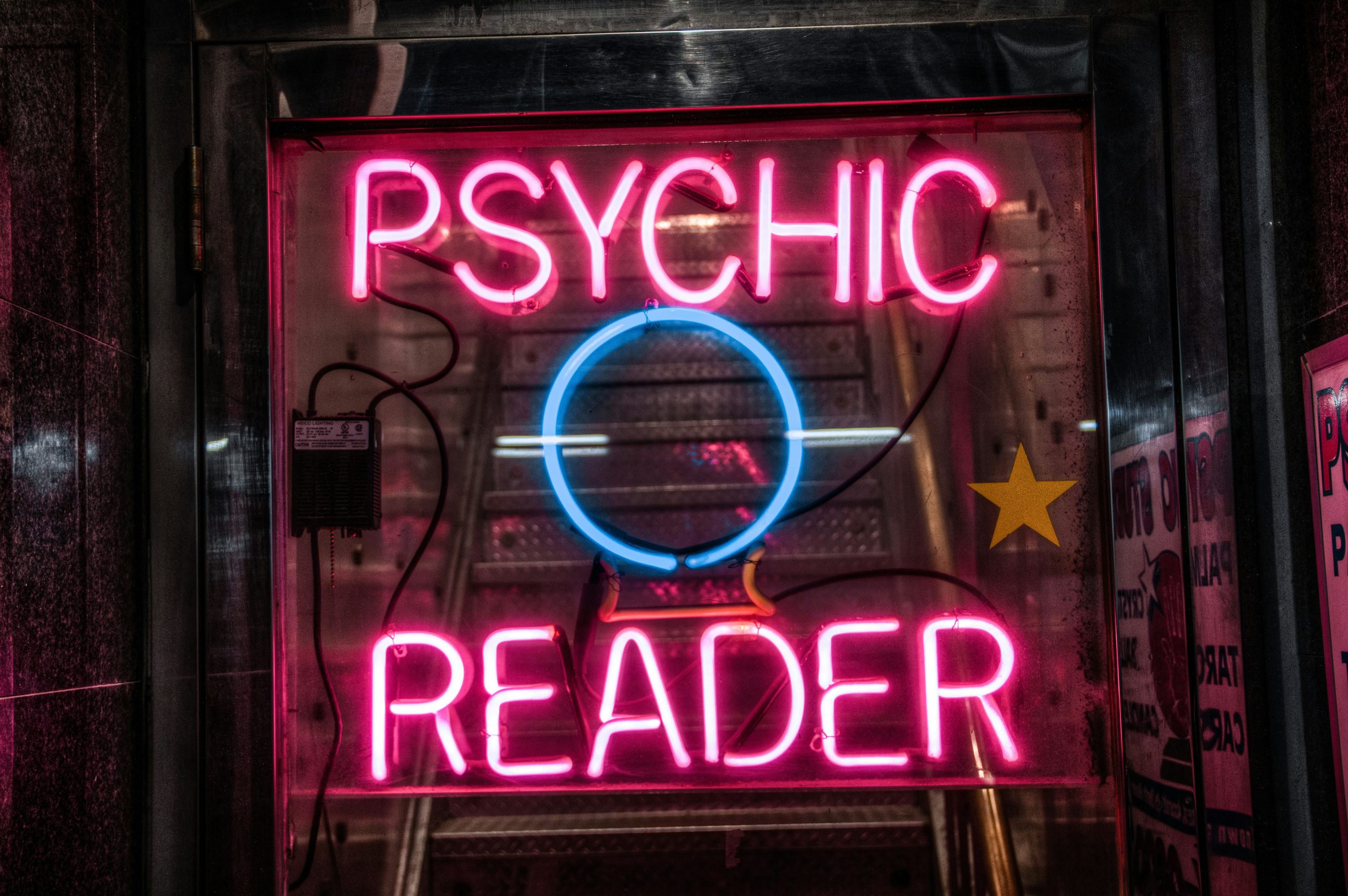essays
Yūrei: the Ghosts of Japan

When Lafcadio Hearn stepped onto the shores of Japan in 1890, he began writing ghost stories. On assignment from Harper’s Magazine, Hearn was charged to explore and explain this undiscovered country to eager Americans. That his answer was to write about Japan’s spirits should have surprised no one; Hearn had a predilection for the macabre and uncanny. But while a previous sojourn in New Orleans had supplied him with ore for his imagination, in his new home he struck the mother lode. Japan is the most haunted country on Earth.
A Religion of Ghosts
Japan lives with its ghosts like few other cultures. Since ancient times, Japan’s religion and culture has been deeply bound with ghosts, called yūrei. Both feared and revered, yūrei are part of the deep magic; a foundational belief that humans have a god inside of them. This powerful, supernatural entity — called reikon or tamashi — is held in check only by the meat-cocoon of the body. On death, the spirit is unleashed. For good or ill.
This powerful, supernatural entity…is held in check only by the meat-cocoon of the body. On death, the spirit is unleashed. For good or ill.
Edo period scholar Hirata Atsutane wrote, “The spirits of the dead continue to exist in the unseen world which is everywhere about us; and they all become gods of varying character and degrees of influence.” If properly respected with the correct rituals, a person’s spirit becomes a protective ancestor deity — called kami or sōrei. But if something goes wrong — if the spirit has some lingering business, or if death rites are not properly performed — then a yūrei is born.
Yūrei can never be destroyed, only sated. Desire is the key to yūrei — they want something. This drives them, gives them purpose. Their manifestation can be as benign as delivering a final “thank you” never said while alive, to as terrifying as shattering the earth with rage. Since ancient times, natural disasters were said to be the result of yūrei. Wielders of fire, flood, and earthquake, there is nothing more fearsome than an angry Japanese ghost.
The pacification and transformation of yūrei has dominated Japanese religion and politics for millennia. Controversial author Umehara Takeshi calls it the consistent theme through the history of Japanese civilization.
During the Heian period the government bowed to practitioners of Goryō Shinko — the Religion of Ghosts. To calm spirits, official rituals were performed to posthumously raise the dead in rank and title before they were enshrined as kami, protector spirits in Shinto shrines. This belief system was so pervasive that a ceremony to welcome the dead into the ranks of protective spirits was even established and observed in the Imperial Court.
Lafcadio Hearn said Japan lay under The Rule of the Dead. In his landmark 1903 book Japan: An Attempt at Interpretation, he described a relationship where the living must pacify the dead, and in return the dead watch over the living. “And the hand of the dead was heavy;” Hearn wrote, “it is heavy on the living even today.”
Yūrei and Storytelling
Most people know that Japan is particularly good at ghost stories. As they should be; they have been working at it for some time. Theater, literature, art, or film — Japan’s storytelling is inherently haunted. Indeed, a history of Japanese literature is a history of ghost stories.
Japan’s storytelling is inherently haunted. Indeed, a history of Japanese literature is a history of ghost stories.
Two of Japan’s oldest known books, the 12th century Genji Monogatari (Tale of Genji) and Konjaku Monogatari (Tales of Times Now Past) are bursting with yūrei. In Genji Monogatari, shining Prince Genji is haunted by the Lady Rokujō, whose love he spurned. She brings ghostly wrath down upon three of Genji’s lovers. Rokujō is a foundational character of Japanese storytelling — the woman of vengeance who uses her supernatural powers. Konjaku Monogatari is a famed collection of supernatural tales that have inspired Japan’s writers since its publication.
In 1776, Ueda Akinari adapted stories from Konjaku Monogatari as well as other classic supernatural tales into one of the greatest works of world literature, Ugetsu Monogatari — Tales of Moonlight and Rain. A profound book, Ugestu Monogatari is a virtuoso performance as well as a vehicle of transformation. Written by a man born in the mud to a nameless prostitute, Ueda used Ugetsu Monogatari to raise himself into a world of literati and respect denied to him by his birth.
Many of Japan’s talented writers have turned their skills towards yūrei. Just as everyone is said to have at least one novel in them, every Japanese author has at least one yūrei story to tell. Kawabata Yasunari, the first Japanese person to win the Nobel Prize for literature, wrote several yūrei stories, including the Palm-of-the-Hand story, “Fushi.” In the story, a beautiful young yūrei and an old man, her former lover, take a walk together, recounting their past and the situations that separated them and led to the girl’s suicide. Modern novelists like Yoshimoto Banana and Murakami Haruki have spun their own yūrei tales. And popular author Miyuki Miyabe’s 2013 book Apparitions: Ghosts of Old Edo showed that Japan’s old ghosts still have life left in them.
Folklorist Yanagita Kunio attributed this to what he called involuntary tradition — whether they believe in them or not, the Japanese people grow up simmering in a pot of ghost lore and culture, until it seeps down to the bones.
Yūrei in Modern Japan
It’s been a good century and some change since Hearn walked Japan, but modernity has not altered this dynamic or shaken Japan’s beliefs. The dead still rule.
In the middle of Tokyo, a small section of prime real estate lies undeveloped out of fear of arousing the wrath of the samurai Taira no Masakado. After Masakado’s execution in 940 CE his severed head was said to have flown from his body, bent on wrath. His head finally landed in a tiny fishing village where the locals enshrined it in order to appease his anger. That little village grew up to be the major metropolis of Tokyo, but the shrine remains undisturbed. In fact, in 1940 the Ministry of Finance paid for an extravagant ceremony to rededicate the shrine after a particularly fierce bolt of lightning struck their offices near Masakado’s shrine. After WWII, when the American occupying forces tried to demolish the shrine, their bulldozer suddenly flipped over, killing the driver. Today, no one will touch it.
Similar shrines with similar stories can be found all over the country. Every stone shrine tucked inside the bushes along the side of the road or tiny statue of Jizo at a temple is dedicated to some spirit. A beautiful statue of a young girl staring at the sea in Mie prefecture is actually there to pacify an angry gang of yūrei that drowned a group of schoolgirls in 1955. The picturesque Himeji Castle, an UNESCO heritage site, boasts the Well of Okiku that figures in one of Japan’s most famous yūrei legends.
In 2013, no one batted an eye when Prime Minister Shinzo Abe was reluctant to move into his official residence because he felt it was haunted. While this would have stirred the media into a frenzy in the US, Japan considered it perfectly sensible. All you have to do is look at the news to see what arises from a state visit to Yasukuni Shrine — the modern incarnation of Japan’s ghost religion Goryō Shinko. Home to Japan’s honored war dead who have been elevated to kami spirts, including many Class A war criminals from WWII, Yasukuni Shrine it a controversial house of worship to say the least.
Because what Hearn wrote about Japan more than a century ago still holds true: the hand of the dead was heavy; it is heavy on the living even today.









